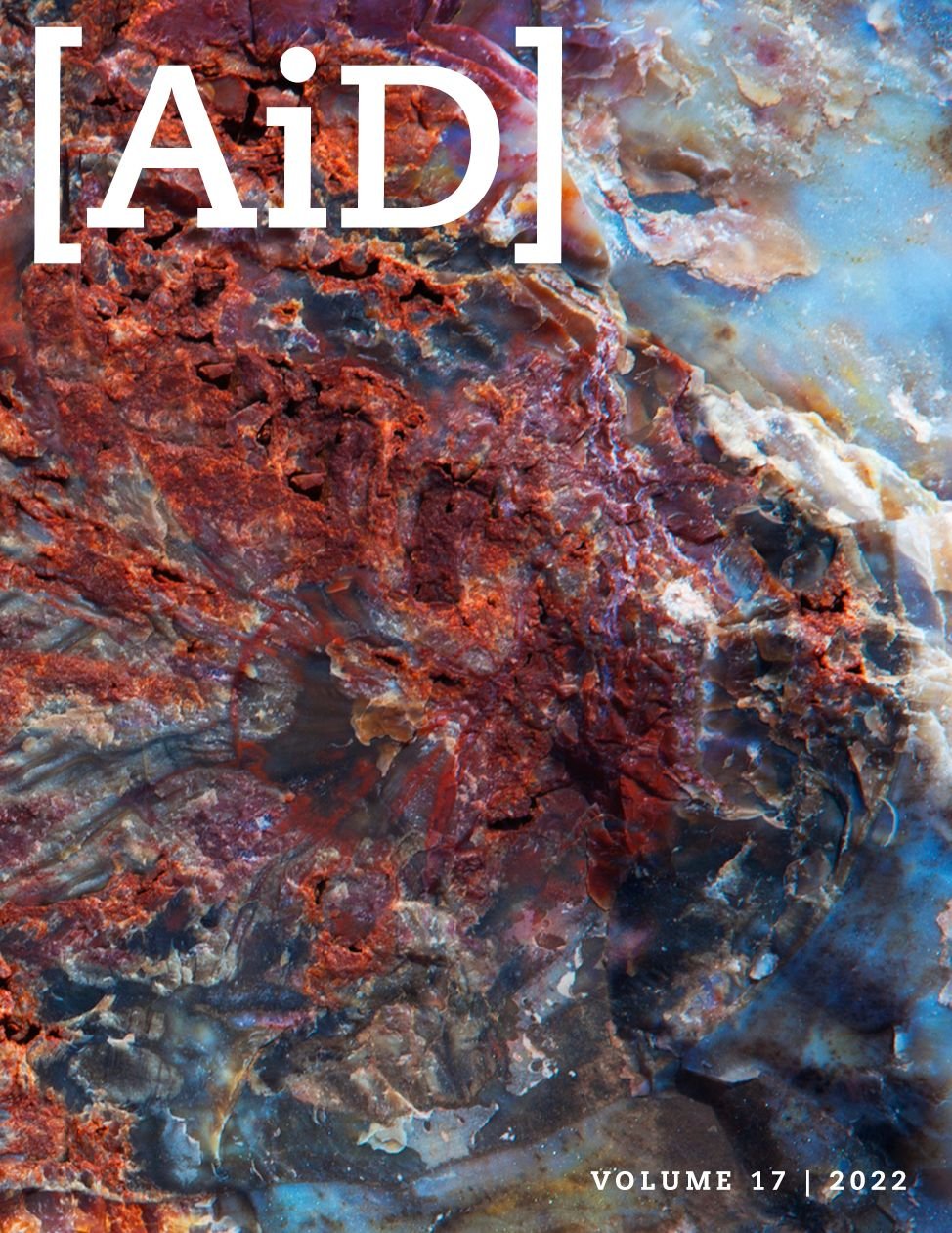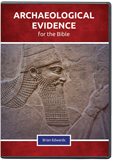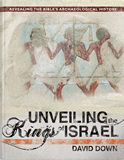
Archaeological Evidence for the Kingdom of Judah
How recent digs in Sha’arayim, Socoh, Ziklag, and Lachish confirm history from the ancient kingdom of Judah and why it matters for biblical reliability
During the past 14 years (2007–2021), archaeological digs have taken place at four separate sites in the Judean foothills: Khirbet Qeiyafa (biblical Sha’arayim, mentioned in 1 Samuel 17:52 and 1 Chronicles 4:31), Khirbet el-Ra’I (biblical Ziklag, mentioned as being in southern Judah in Joshua 15:31), Socoh (Joshua 15:31), and Lachish (mentioned as being in southern Judah in Joshua 15:31). As cities mentioned in Scripture in the southern part of Israel (and during the divided monarchy, Judah) at the western border with the Philistines, they should be expected to have been fortified cities, with walls and gates.
Since the 1990s, more and more evidence of the southern kingdom of Judah has come to light, including seals, pottery, inscribed tablets, and rings which mention David, Solomon, or a later king from the “house of David.” While skeptical biblical archaeologists and historians have grudgingly accepted these findings, they have maintained the attitude that Judah was a petty kingdom, or even a small chiefdom of little significance. Even as recently as 2010, liberal Jewish archaeologist Israel Finkelstein said in an interview that Jerusalem was little more than a “hill-country village” and David’s armies were “500 people with sticks in their hands shouting and cursing and spitting—not the stuff of great armies of chariots described in the text.”1
Evidence of well-fortified towns and cities has been unearthed, and several important artifacts with biblical names have surfaced.
But the recent archaeological digs have begun to change that opinion as more and more information comes to light. Evidence of well-fortified towns and cities has been unearthed, and several important artifacts with biblical names have surfaced.
Sha’arayim
The smallest of the sites excavated was Khirbet Qeiyafa (biblical Sha’arayim). The town was located on the border with Philistia, opposite Tell es-Safi (biblical Gath). After David killed Goliath and the armies of Israel routed the Philistines, the Israelite armies chased them as they fled back through Sha’arayim on their way to Gath (Joshua 15:31). Excavations took place from 2007–2013 and revealed a heavily fortified city with “a rich destruction layer” surrounded by a casemate wall (a double, parallel line of walls with partition walls), two gates and a row of houses adjacent to the city wall.2 During their last year there, a monumental administrative building was uncovered on the acropolis in the 2013 season. The building was found out to be from the Byzantine era (c. AD 500), but further excavation found that it had been built over a building from the time of King Saul and David (c. 1050–1000 BC). This earlier building covered more than 10,000 square feet and its walls were three feet thick. According to the authors of the paper, they believed it “occupied the highest and most important location—at the center of the site, overlooking the entire city as well as the surrounding countryside as far as Jerusalem and the Hebron mountains to the east and Ashdod to the west. This huge structure was both a prominent and potent point of the city. It reflects power and authority over the city, as well as the region. We believe it was an administrative center of the recently established Davidic kingdom.”3
But the major find was an ostracon (shard of pottery with an inscription) discovered in 2008 with five lines of the oldest known Hebrew text ever discovered, believed to be a thousand years older than the Dead Sea Scrolls. The text has received numerous (and differing) translations, one of which contends that it contains a reference to the chief officers establishing a king,4 while another contends it is instruction for the king to remember the poor and the widows and execute justice on their behalf.5 Both of these things are mentioned in Scripture, Saul being made King of Israel by the people at Gilgal (1 Samuel 11:14–15) and God’s instructions to kings, princes, and leaders in Israel not to pervert justice (Isaiah 1:17, 23; Jeremiah 7:6–7, 22:1–3), so either translation is consistent with Scripture on these points. The translators of the text mentioned above both consider the ostracon to be from the time of King Saul (c. 1100–1050 BC).
Interestingly, the only other biblical mention of Sha’arayim (1 Chronicles 4:31) tells us that this city was inhabited “until David reigned.” This is significant because after Saul and his son Jonathan were killed on Mt. Gilboa (northern Israel) and the armies of Israel routed, the Philistines raided several towns in Israel and Judah. Not long after Saul’s death, the armies of David and the armies of Ishbosheth, Saul’s son, had engaged in a battle (2 Samuel 2:12–17). Then after Ishbosheth was killed in a palace coup, David was crowned king of all Israel at Hebron. Subsequently, David and the armies of Israel fought the Jebusites in Jerusalem and took the city (2 Samuel 5:6–9).
Then we read that David turned his attention to the Philistines, who by this time had occupied much of western Israel as far north as Baal Perazim, about six miles northwest of Jerusalem (2 Samuel 5:19–25). A short time later, he routed the Philistines again and drove them all the way back to the coastal plains, even taking the city of Metheg-ammah, which was likely a western suburb of Gath (2 Samuel 8:1). David then defeated Moab, Edom, and Syria (2 Samuel 8:2–5). He put garrisons in Syria and Edom (2 Samuel 8:6, 15) but did not put garrisons again in western Israel. It therefore appears that the Philistines destroyed Sha’arayim right after the defeat of Saul, but David’s routing of the Philistines a few years later and their being put under subjugation and tribute meant he did not need a strong border on this western side of the kingdom. So the city walls and “administrative building” mentioned above may have been built during Saul’s reign and lasted to the time of David’s reign over Judah, but by the time he became king over all Israel, the city had been destroyed. This accords well with 1 Chronicles 4:31.
Socoh
Of special note in this 2010 archaeological dig was a royal jar handle with the name Zephaniah on it. The prophet Zephaniah was a great-great-grandson of King Hezekiah and prophesied in the time of King Josiah of Judah.
Socoh (also spelled Sochoh) was one of the towns of southern Judah (Joshua 15:35). Socoh was a small walled town with two primary building phases, fortified during the time of Rehoboam (2 Chronicles 11:7) and also in the eighth century BC, likely from the time of King Uzziah (Azariah), who is recorded as fortifying southern Judah and even occupying Philistine lands. But Socoh/Sochoh had been in existence as a village long before and was actually the site where the Philistines camped when the battle of David and Goliath took place (1 Samuel 17:1). The last mention of Sochoh is in 2 Chronicles 28:18, when the city was captured and occupied by the Philistines during the reign of wicked King Ahaz (Uzziah’s grandson). Of special note in this 2010 archaeological dig was a royal jar handle with the name Zephaniah on it. The prophet Zephaniah was a great-great-grandson of King Hezekiah, and he prophesied in the time of King Josiah of Judah. King Hezekiah had recaptured much of southern Israel from the Philistines and had even conquered parts of Philistia (2 Kings 18:8), so it is likely that Judah reoccupied Socoh at this time, meaning it is plausible that the Zephaniah seal was the prophet’s or referred to him.
Ziklag
The excavations at Khirbet al-Ra’I (biblical Ziklag) that occurred from 2015–2018 revealed several layers of occupation from the time of the judges, massive fortifications during the time of King David (c. 1050–1000 BC) and Solomon/Rehoboam (c. 1000–900 BC), and a Persian and Hellenistic layer. Between the layers from the time of the judges and David, there were periods of Philistine occupancy (deduced from Philistine pottery dominating at certain levels). Ziklag is not a Semitic name but appears to be of Philistine origin.6 When Joshua listed the tribe of Judah’s land portion, it included many cities that were held by the Philistines at the time, including Ziklag (Joshua 15:31).
We read in 1 Samuel 27:1–6 that Ziklag, during the time of King Saul, was occupied by the Philistines but given to David as a gift by Achish, king of Gath. Of special note was a destruction layer between the Davidic and Solomon layers, corresponding exactly with 1 Samuel 30:1, which states that while David was away, the Amalekites came and burned the city down and took everyone captive. David was able to catch up to and decimate the Amalekites and recover all the people and spoils (1 Samuel 30:16–20). But likely he and his army had to rebuild the city. There is evidence of building stone being reused, and the rebuilding was on a much smaller scale than the former city had been, only about one-tenth the size.7
Again, this would fit well with the biblical text, which informs us that as David was returning to Ziklag, King Saul had been killed in battle. Shortly afterward, David went to Hebron and was crowned king of Judah (2 Samuel 2:1–4), so he and his family and armies moved to Hebron. Ziklag did not need to be as large as it had been, so it was scaled down. However, this smaller village lasted only a short time and ended in a sudden destruction, leaving dozens of complete pottery vessels in the destruction layer.8 This fits the account of Shishak’s campaign during the time of Rehoboam, when Shishak plundered southern Judah on his way to Jerusalem (2 Chronicles 12:2–4). Shishak would not have been interested in looting Judean pottery, as his pillaging of the gold artifacts in the temple in Jerusalem makes clear.
Lachish
The second-to-last site excavated (2013–2017) by Garfinkel and his associates, and the largest by far, was Lachish. In the southern kingdom of Judah, Lachish was probably the second most important site besides Jerusalem. The city as it was in the c. 1000–900 BC timeframe (Level 5) was circled by a massive, almost 10 ft. (3 m) thick wall with residential buildings abutting the wall.9 According to 2 Chronicles 11:5–12, Rehoboam, the son of Solomon, fortified Lachish together with several other cities in Judah. This accords well with the timeline estimated for the city’s fortification and settlement during this period. Rehoboam’s reign is dated at 975–957 BC by Ussher and 931–913 BC by conventional archaeologists, either of which fit the proposed dates.
Lachish is mentioned numerous times in the OT, starting with the mention of its Amorite occupants prior to Israel conquering it in Joshua 10:31–32. Its last mention is in Nehemiah 11:30, as some of the Israelites returned there from the Babylonian captivity during the time of Ezra. Consequently, there are nine main archaeological layers to sift through on the Tell, with the oldest having the highest numbers. Level 3 has been positively identified as being the level when the Assyrian king Sennacherib and his armies destroyed the town in 701 BC, because positive evidence of a siege mound has been found at that level (e.g., 2 Chronicles 32:9). Level 2 was the then-current city which Nebuchadnezzar destroyed in 586 BC (e.g., Jeremiah 34:7), and Level 1 was the layer which covers the post-exilic times mentioned in Nehemiah 11:30.
Level 5 is the one with the most impressive defensive structures and is dated to 1000–900 BC. Pottery types found at this level are typical Judean pottery found elsewhere in Israel dated to the same period, and in addition to the thick walls, remains of a fortress have been found on Level 5.10 Of special note is that there was no destruction layer between Level 5 and Level 4. In fact, Level 4 seems to have grown out of and spread over a larger area than Level 5.11 As the population increased, people started moving and building outside the fortress walls but still had the option of retreating inside the fortress walls in the case of a battle or siege. This same pattern repeated itself between Level 4 and Level 3: no destruction layer, but urban expanse and reuse of materials.12 Four-handled jars, some with seals bearing the names of Hebron and Socoh (and possibly Mareshah) on them, attest to commerce between the Judean cities.
Archaeology Corroborates Scripture (Again and Again)
The excavations at these four Tells (archaeological mounds of former villages and/or cities) in what was the southern part of the kingdom of Judah correspond perfectly with the descriptions of events in the Bible, starting in Joshua and through the books of Kings and Chronicles (and even to the time of Nehemiah).
The excavations at these four Tells (archaeological mounds of former villages and/or cities) in what was the southern part of the kingdom of Judah correspond perfectly with the descriptions of events in the Bible, starting in Joshua and through the books of Kings and Chronicles (and even to the time of Nehemiah). They are proof of a widespread monarchy, from the time of Saul through to the last kings of Judah, with the resources to build and fortify large towns and establish trade between them. The Israelites (and Judahites) of the time of the united and divided monarchies were not a ragtag group of petty chiefdoms as envisioned by liberal critics but a complex society ruled by occasional godly and, more oftentimes, wicked kings who did not follow the Lord but instead fell into idolatry. Historical evidence of warfare with outside monarchs (from Egypt, Assyria, and Babylon) testifies to the accuracy of Scripture when it touches on historical matters. Evidence does not “prove” Scripture, but it helps us to see that what God has said is trustworthy and true. And when one has the proper perspective of the Word of God being absolute truth from an omniscient and holy God, it follows that the Bible’s history is true, its message of the fall of man, the flood, dispersion at Babel, and most importantly, the gospel, is true.
The True Son of David
Archaeological finds of physical objects bearing descriptions of members of the “house of David” serve yet again to deny revisionist history which sought, and still seeks, to claim that David and Solomon were mythical characters. Answers in Genesis often points out that denying a historical Adam undermines the very gospel itself. Christ in his humanity was a literal descendant of a literal Adam and came as the last Adam to give life since the first Adam brought death. But denying a literal David is just as critical a mistake. Christ is descended from a literal David, and Paul emphasized this important connection: “Remember Jesus Christ, risen from the dead, the offspring of David, as preached in my gospel” (2 Timothy 2:8).
As Christians, we know from Scripture that David was the king of Israel, and this should impact our worship of Christ. How so? We should remember that Jesus’ human lineage was from the line of David, as emphasized in the very first verse of the New Testament (Matthew 1:1), and we can (and should) glorify God by remembering what was said of Jesus during his triumphal entry—“Hosanna to the Son of David! Blessed is he who comes in the name of the Lord! Hosanna in the highest!” (Matthew 21:9). And Jesus personally identifies with David at the very close of Scripture, reminding all true churches throughout all generations, “I, Jesus, have sent my angel to testify to you about these things for the churches. I am the root and the descendant of David, the bright morning star” (Revelation 22:16). From the very first verse to the last chapter of the New Testament we see Christ identified with David—a real person who was a real king—whose descendant is the true King of kings!
Answers in Depth
2022 Volume 17
Answers in Depth explores the biblical worldview in addressing modern scientific research, history, current events, popular media, theology, and much more.
Browse VolumeFootnotes
- Robert Draper, “Kings of Controversy,” National Geographic (December 2010): 72–74.
- Yosef Garfinkel, Michael Hasel, and Martin G. Klingbeil, “An Ending and a Beginning: Why We’re Leaving Qeiyafa and Going to Lachish,” Biblical Archaeology Review 39, no. 6 (November/December 2013): 44–51.
- Ibid., 44–51.
- “Qeiyafa Ostracon Relates the Birth of the Kingdom of Israel,” Bible History Daily, May 7, 2012, accessed November 2, 2021, https://www.biblicalarchaeology.org/daily/biblical-artifacts/inscriptions/the-qeiyafa-ostracon-relates-the-birth-of-the-kingdom-of-israel.
- Alan Millard, “The Ostracon from the Days of David Found at Khirbet Qeiyafa,” Tyndale Bulletin 62, no. 1 (2011): 6.
- Yosef Garfinkel and Saar Ganor, “Was Khirbet al-Ra’i Ancient Ziklag?” Strata 37 (2019): 53.
- Yosef Garfinkel, “The 10th Century BCE in Judah: Archaeology and the Biblical Tradition,” Jerusalem Journal of Archaeology (2021): 132.
- Garfinkel, “The 10th Century BCE in Judah,” 132.
- Ibid., 135–137.
- Hoo-Goo Kang and Yosef Garfinkel, “The Fortifications of Areas CC and BC at Tel Lachish,” American Journal of Archaeology 125, no. 3 (July 2021): 422.
- Ibid., 444.
- Ibid., 448–450.
Recommended Resources

Answers in Genesis is an apologetics ministry, dedicated to helping Christians defend their faith and proclaim the good news of Jesus Christ.
- Customer Service 800.778.3390
- © 2024 Answers in Genesis





